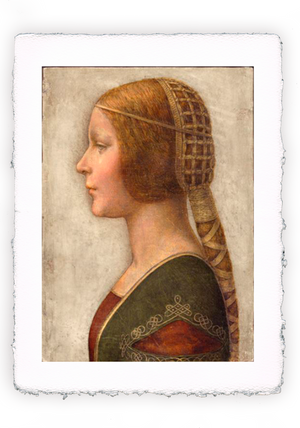
Pieter Paul Rubens, Facebook and the Baroque

Among all the artists and paintings in the history of art, Facebook he devoted particular attention to Rubens. In 2018, on the occasion of an exhibition dedicated to the great painter, the social platform censored most of the works because of the ... nudes.
Naked cherubs and baroque women do not have to be seen.
Curators and artistic directors from Flanders responded with a funny initiative: fake policemen with "FB" t-shirts walked around the exhibition asking visitors if they had a social profile on Facebook, in case of a positive response they kindly invited the gentlemen not to see the Square.
Paul converts
Sir Rubens was born in Siegen, Germany, on June 28, 1577 by Jan Rubens, a Flemish lawyer, and Maria Pypelynckx of Calvinist religion.
To escape persecution against Protestants they take refuge in Cologne and Antwerp. Little Pieter Paul receives a humanistic education and, luckily for him, converts to Catholicism.
He studied with masters such as Otto van Veen and Jan Brueghel the Elder and in 1598 he himself became the master of the painters' guild.
Eight years in Italy
An important turning point for Rubens is the trip to Italy, which he decides to start in May 1600. In Venice he studies Titian, Veronese and Tintoretto and becomes court painter of the Duke of Mantua Vincenzo Gonzaga.
The duke sent him to Rome to copy some paintings, so he was able to study Michelangelo and Raphael, but also his contemporaries Carracci and Caravaggio.
From this period is the "Portrait of Brigida Spinola Doria" (picture chosen as the image of the post), which demonstrates a truly exceptional and amazing technique.
He received important commissions and stayed in Italy until 1608 when, due to his wife's health conditions, he returned to Antwerp.
Industrial painting
Protected by the powerful burgomaster and Archduke Albert governor of the Netherlands, his work can only grow.
He chooses his students / collaborators according to specific specializations: who paints the trees, who the sky, who the fabrics etc. Rubens prepares a “cardboard” (ie the complete final drawing that serves as a model) and then leaves the transposition of his idea into the final form to his “specialists”.
Important and impressive commissions allow Rubens to realize, also thanks to his proto-industrial system, over three thousand works.
Engravings and tapestries
In his later years he devoted himself, in addition to the rest, to engravings together with Paulus Pontius (also from Antwerp), producing splendid and refined graphic works.
In 1630 he worked on twelve tapestries for a brotherhood in Ancona and remarried a young sixteen year old daughter of a wealthy silk merchant.
Hundreds of sketches and cartoons will be used to create posthumous paintings.
Rubens died in Antwerp on May 30, 1640 at the age of 63.
Was it true Baroque?
With the "Baroque" label (the meaning of which refers to bizarre, irregular, not perfect things) art criticism wanted to identify the artistic production that goes from after the Renaissance to the eighteenth century, with a derogatory intent.
Opulent forms, visual tricks, theatrical stage systems, bright colors bordering on decorative. Certainly Rubens used this style. Michelangelo's study of shapes, Flemish precision, Raphael's nuances find a masterful synthesis in Rubens.
A detail, however, belongs only to him. The contour lines are blurred. It is a technical anticipation that we know well: the Impressionists worked without contours.
Obviously these are very different contexts and practices, but Rubens, by canceling the drawn profile, obtains a realism and movement of his own.
He was certainly aware of his abilities because he wrote: "My talent is such that no undertaking, however vast in size, will ever exceed my courage."


Leave a comment